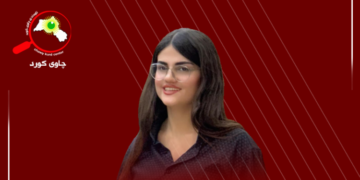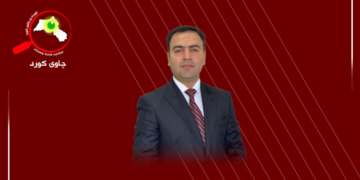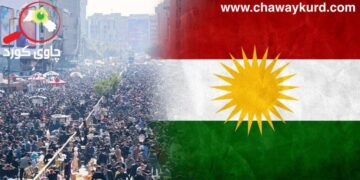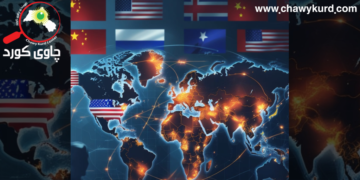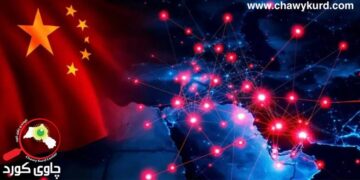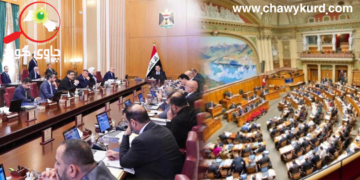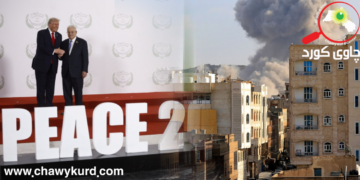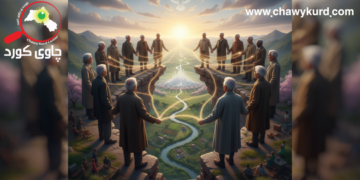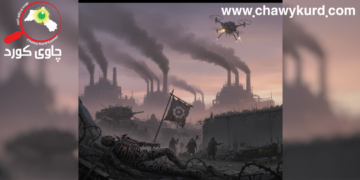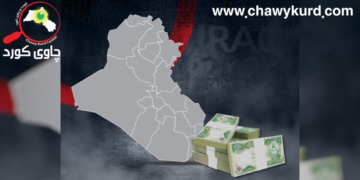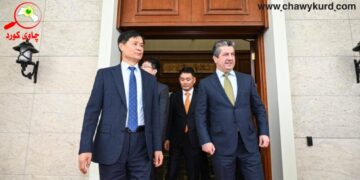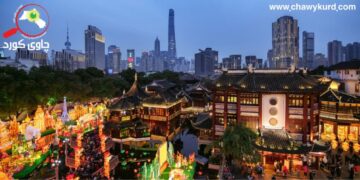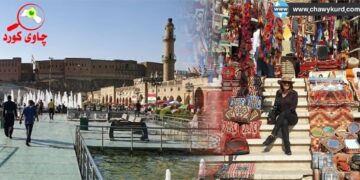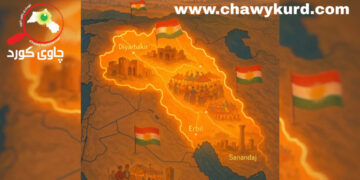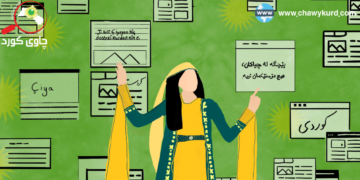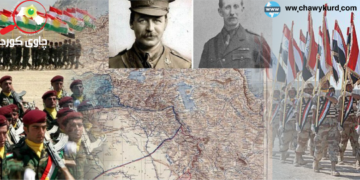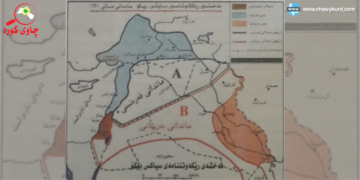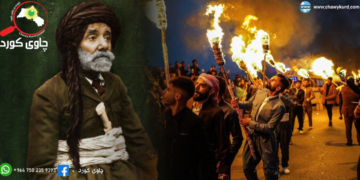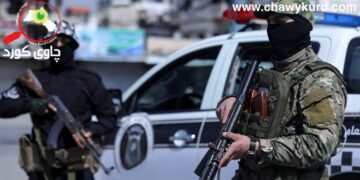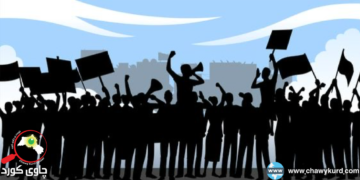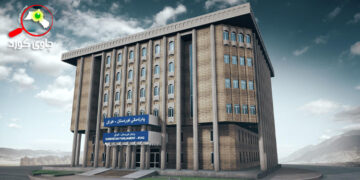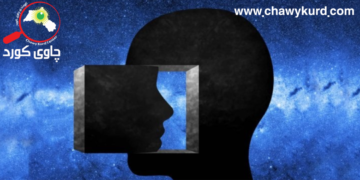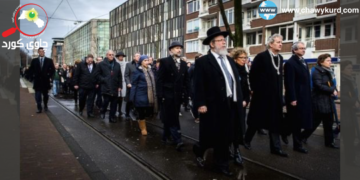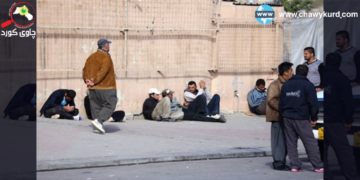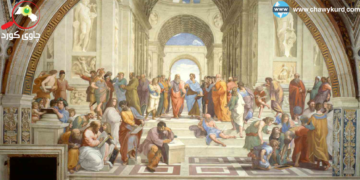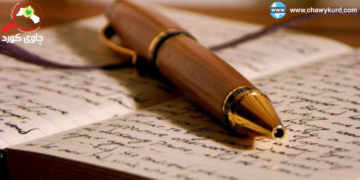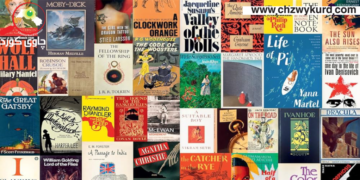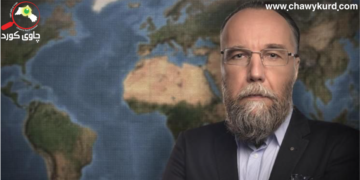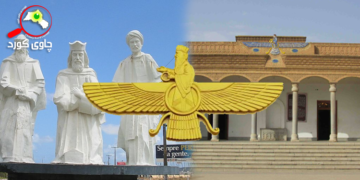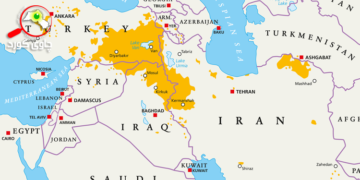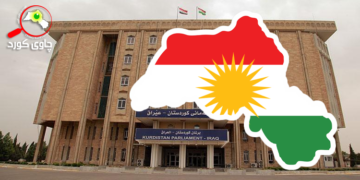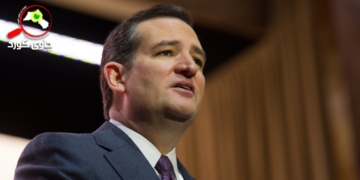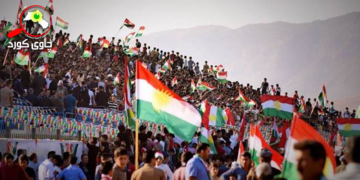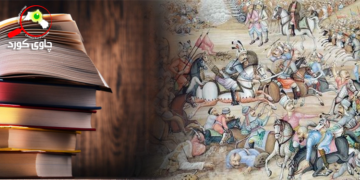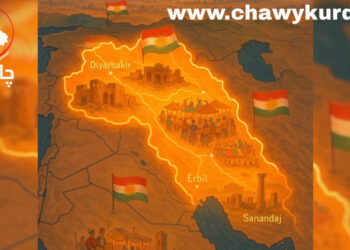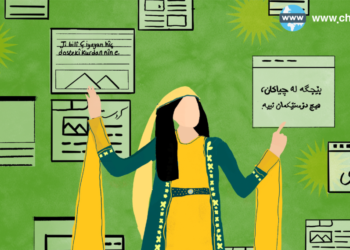Is Mustafa Kemal Ataturk, the founding father of the Turkish Republic, to blame for his country’s troubled relationship with its Kurdish-speaking citizens? In his foreword to Jonathan Rugman’s fair-minded account of the problem, John Simpson, foreign affairs editor of the BBC, wrote:
In terms of ethnicity and culture, Turkey is varied, complex and intermixed. Yet the myth which Ataturk bequeathed to his fellow countrymen insists that there is a single ethnic group, the Turks. Nowadays the effects of this myth can be brutal; it can never, in the long run, be successful. While Turkey gives no legal recognition to its large Kurdish minority, the problem that dissident Kurds pose for the Turkish state cannot be solved.1
The seriousness of the problem is undeniable. According to figures given at the end of June 1998 by the head of the anti-terrorist department of the Turkish police, the radical Kurdish nationalist organization PKK (Partiya Karkeren Kurdistan – Kurdistan Workers Party), had by that time launched nearly 19,000 attacks since the beginning of its armed campaign in 1984. These caused the deaths of 5,121 members of the security forces and of 4,049 civilians, while 17,248 persons described as terrorists were killed.2 In spite of repeated assurances by the security forces that the back of the insurrection has been broken and that the PKK now numbers only 5,000 armed militants, the death toll continues to mount. As Sukru Elekdag, the former Turkish Ambassador in Washington, has recently pointed out, ‘the problem of the south-east’ (that is, the Kurdish problem) is acquiring a growing international dimension and constitutes the main and most urgent threat facing Turkey.3 In the circumstances, an elucidation of the genesis of the problem is a matter of current political, as well as of historical, importance. And since the actions and statements of Ataturk remain a source of inspiration of Turkish government policy, and tend to be used to legitimize it, it is as well to be clear about Ataturk’s attitude towards the Kurds. Mustafa Kemal Pa§a, as he then was, did not acquire first-hand experience of Kurdish-speaking areas until April 1916, when he was promoted Brigadier-General at the age of 35, and sent to Diyarbekir (now Diyarbakir) at the head of the 16th corps, a part of the 2nd Ottoman army, which was transferred from Thrace after the withdrawal of the Allies from Gallipoli. Enver Pasa, the Ottoman deputy commander-in-chief (theoretically, deputising for the elderly Sultan Mehmet V), had prepared an ambitious plan, requiring the 2nd Army in the south-east and the 3rd Army in the north-east to close in on the Russian troops, which had occupied Erzurum and were fanning out to the west and south. The plan failed, but Mustafa Kemal acquitted himself well, regaining the towns of Mus and Bitlis in the Kurdish area in August 1916. A little later, a Russian counteroffensive forced him out of Mus, and the front then remained more or less stable until the Russian Revolution the following year. In November 1916, Mustafa Kemal became deputy commander of the 2nd Army, when the commander Ahmet izzet Pa§a, a general of Albanian origin, went on leave to Istanbul. In March 1917, Ahmet izzet Pasa was made commander of all the armies on the eastern front and Mustafa became substantive commander of the 2nd Army. He remained in the area until July 1917, when he was appointed commander of the 7th Army, part of the Lightning (Yildinm) Group, brought together in Syria under the German general (Marshal in the Ottoman army) Erich von Falkenhayn for the purpose of recapturing Baghdad from the British.4
Mustafa Kemal kept a diary between 7 November and 24 December 1916 during his service with the 2nd Army.5 He records the books he read (a French novel and two books on philosophy), his thoughts on army discipline and on the emancipation of women, and a few impressions of the ravaged countryside: Bitlis made him think of the ruins of Pompeii and of Nineveh. There is a brief mention of a volunteer detachment, organized by a local Naksibendi sheykh, of hungry Kurdish refugees, of a meeting with the tribal leader Haci Musa who commanded the Mutki Kurdish militia. Mustafa Kemal’s tone is remarkably detached: he observes his surroundings with the curiosity of an outsider. He does not express any views on the Kurds.
His chief of staff, Lt. Col. izzettin (later General izzettin Cahslar) is more forthcoming in his diary.6 ‘In the villages, there are many men capable of bearing arms’, he noted on 2 May 1916. ‘The enemy is pressing hard against their land. Yet most of them are not rushing to defend it. They will have nothing to do with military service. They do not know Turkish. They do not understand what government means. In brief, these are places which have not yet been conquered. Yet one could make good use of these people. They obey their tribal leaders and sheykhs, who are very influential in these parts.’7 On 11 November 1916, izzettin commented: ‘One must gradually set up a military organization among the Kurds. One must begin by forming units from among those who are comparatively more used to the government and are more friendly. At the same time, the government must organize to do more and increase its influence.’8 Like Mustafa Kemal, izzettin notes the poverty and backwardness of local people. He hopes for a transfer from ‘these sorrowful surroundings’ and says that anyone posted from the west to the east faces a hard time.9
Mustafa Kemal had one close military supporter who had a good knowledge of the Kurds. This was Col. Fahrettin (later General Fahrettin Altay, the renowned cavalry commander in the Turkish War of Independence). Born in Scutari in Albania, Fahrettin was posted to the 4th Army in eastern Anatolia in 1904, after graduating from the staff college in Istanbul.10 Fahrettin describes the posting as exile, saying that the regime of Sultan Abdulhamit suspected him of holding liberal views.11 However, he stayed on after the Young Turkish coup of 1908, and took part in a punitive expedition against Kurdish tribes in the Dersim (now Tunceli) mountains, west of Erzurum. The expedition was one of several mounted by the Young Turkish regime against dissident tribes – Druzes, Arab tribes in the Yemen, Albanians – which found the new constitutional order even less to their liking than Abdulhamit’s absolutism, and which were, in consequence, smitten harder than at the time of that manipulative sovereign. Fahrettin accepted the submission of the Dersim Kurds, on condition that they paid taxes and desisted from banditry. But the arrangement he made with a tribal leader was disallowed. He comments in his memoirs: ‘It was that breakdown which made it necessary to mount another punitive expedition in these parts 28 years later.’12 The reference is to the suppression of the Dersim rebellion by the armed forces of the Turkish Republic in 1937. In 1909, Fahrettin was put in charge of the reorganization of the Hamidiye Kurdish tribal regiments, which were renamed Tribal Cavalry Regiments (Asiret Suvari Alaylan). He claims that he would have preferred a Turkish name, such as ‘Oguz regiments’, on the grounds that some of those who considered themselves Kurds were of Turkish origin, but that he was overruled by the Ottoman War Minister, Mahmut §evket Pasa.13 In 1913, Fahrettin led some of these tribal forces against the Bulgarians in eastern Thrace at the close of the second Balkan War. There were instances of looting by the Kurds, as ‘our soldiers, who did not know Turkish, mistook local (Turkish) people for Bulgarians, on account of their dress’.14 Fahrettin says that he made the looters return stolen goods and saved them from execution by firing squad. His views match those of Major izzettin: the Kurds were rough diamonds, their land was a place of hardship for a Turkish officer, but they could be managed if one knew how to approach them. Civilization would come with education – in the Turkish language – and would reinforce loyalty to the Ottoman state. The same approach had been tried by Abdulhamit, who, apart from establishing the Hamidiye regiments (modelled on Rusian Cossacks), had inspired the foundation of the Tribal School (Mekteb-i A§air or Asiret Mektebi) in Istanbul.15 But the sons of Arab and of Kurdish chieftains came to blows in the school, and it was closed down in 1907, apparently when the authorities realized that the students were tending to a nationalist critique of the administration.16 Abdulhamit was brought down by the close link between education, which he promoted, and disaffection, which he tried in vain to contain. Nevertheless, the Young Turks, and Ataturk after them, kept the faith in the merits of education in civilization, while redefining its content.
The original source of inspiration of Mustafa Kemal Ataturk, as of other Young Turks, was Namik Kemal, the ‘poet of liberty’. Namik Kemal had written in 1878: ‘While we must try to annihilate all languages in our country, except Turkish, shall we give Albanians, Lazes and Kurds a spiritual weapon by adopting their own characters? … Language … may be the firmest barrier – perhaps firmer than religion – against national unity.’ Elsewhere, Namik Kemal said: ‘If we set up regular schools… and carry out the programs which are now not fulfilled, the Laz and Albanian languages will be utterly forgotten in twenty years.17 Mustafa Kemal did not have to deal with Kurdish tribes until 1916, but he was aware of the experience of his fellow-officers and was imbued with the ideology of Ottoman liberals among whom Turkish nationalism took shape. He had also encountered other tribesmen in his military career. His active military service had started in Syria in 1905-6, where he took part in operations against rebellious Druzes and was threatened by Circassians.18 Then he saw service in the suppression of the Albanian revolt in 1910; and he organized Cyrenaican Arab tribesmen against the Italians in 1911. Immediately after his appointment as commander of the 7th army in Aleppo in 1917, he criticized an agreement made by Kress von Kressenstein (Kress Pasa), German commander in Gaza, with a local Arab tribal leader, Sheykh Hajim. In a letter to the Lightning Group commander, von Falkenhayn, Mustafa Kemal argued that while relations with tribal leaders were necessary, it was dangerous to single out one leader for an agreement and give the impression of downgrading the others. To allow officials to enter into relations with individual sheykhs would only serve to create confusion. He would, therefore, deal impartially with all tribal leaders and show no preference to Sheykh Hajim.19
Mustafa Kemal’s ability to orchestrate relations with tribal leaders – in this case, Kurdish tribal leaders – was put to the test when he arrived in Anatolia on 19 May 1919 and set about organizing Turkish national resistance against the Allies. The signature of the armistice of Mudros on October 1918 and the subsequent arrival of Allied troops in Istanbul and at various points in Anatolia had inspired the hope among some Kurdish leaders that they could advance their personal ambitions with British help. Mehmet §erif Pasa, an Ottoman official of Kurdish origin, who had spent the Great War as an exile in Paris, informed the British in May 1919 that he was willing to become Amir of an independent Kurdistan.20 In Istanbul, a Kurdish notable, Seyyit Abdulkadir, became president of a Society for the Rise of Kurdistan (Kurdistan Teali Cemiyeti), which was supported by the Bedir Khans (Bedirhanogullan), a Kurdish princely dynasty from the area round Diyarbekir (Bohtan in Kurdish, Jazirat ibn-‘Umar in Arabic, El-Cezire in Ottoman Turkish).21 Another Bedir Khan, Siireyya, was the moving spirit of the Committee for Kurdish Independence in Cairo, which appealed for British help in January 1919.22 In Sulaimaniyya (Siileymaniye), Sheykh Mahmud Barzinji, began co-operating with British troops as soon as they arrived at the end of 1918. Kurdish tribal leaders of lesser importance sought contact with the British elsewhere in south-eastern Anatolia.23
On 23 May 1919, four days after his arrival in Samsun as Inspector of the 9th Army, Mustafa Kemal requested a situation report from Ahmet Cevdet, deputy commander of the 13th corps in Diyarbekir. In his reply, dated 27 May, Cevdet detailed the activity of the tribes and of the British in his area, and said that the Kurdish club in Diyarbekir, working for Kurdish independence, was co-operating increasingly with the club of the Ottoman party Concord and Freedom (itilaf ve Hurriyet, known as Entente Liberale in the West), whose policy was in conformity with that of the Istanbul government. The army corps was following closely the anti-government propaganda of the Kurdish club. This telegram and subsequent communications to and from Mustafa Kemal on Kurdish affairs were published in 1996 by the Military History Department of the Turkish General Staff (ATASE – Askeri Tarih ve Stratejik Etiit Basjcanhgi), as part of a series of extracts from Ataturk’s private archive.24 The book comprises 67 documents, from May 1919 to April 1920, with photocopies of the original handwritten Ottoman Turkish texts, followed by transcription into Latin characters. Twenty of them are signed by Mustafa Kemal, first as Inspector of the 9th Army, then of the 3rd Army (when the 9th Army was renumbered, following a reorganization), and later as ‘former Inspector’, then as Chairman of the General Congress (in Sivas), and finally ‘on behalf of the Representative Committee (Heyet-i Temsiliye, i.e. permanent executive)’ of the Society for the Defence of (National) Rights in Anatolia and Rumelia. These 20 telegrams give a clear idea of Mustafa Kemal’s tactics vis-a-vis the Kurds in the critical months which preceded the formation of the government of the Turkish Grand National Assembly in Ankara in April 1920.
The first telegram from Mustafa Kemal in the collection was sent from Havza (inland from Samsun) on 28 May 1919 to four Kurdish tribal leaders, including Haci Musa of Mutki. In it he announces his appointment by ‘our master, the Sultan and Glorious Caliph’ and expresses the hope of visiting their area in the near future. In the meantime, he is certain that his addressees would do all in their power to show to the world that the independence of the country could be ensured if internal order was maintained and if everyone was totally obedient to the state (pp. 10-11). On the same day, Mustafa Kemal sent a telegram to Kamil, a deputy in the Ottoman parliament, who was a member of the Kurdish club in Diyarbekir. Again he speaks of his intention to visit his ‘old friends’ in Diyarbekir at the earliest opportunity. Referring to reports that animosity had arisen between the Kurdish club and Turks in Diyarbekir, Mustafa Kemal warns that this could produce sad consequences for both ‘brothers-in-race’ (irk karde§). He goes on to ask Kamil to urge on the Kurdish club that national unity was essential and that to allow the external enemy to make use of ‘problems which should be settled within the family, such as those concerning the principles of administration and the defence of the rights of the races’ would constitute the greatest treachery (p. 14). The word ‘race’ (irk) tended at the time to be used to denote an ethnic community (ethnie).
The following day (29 May 1919) Mustafa Kemal asked the General Staff in Istanbul to notify him where exactly the British were promoting the cause of an independent Kurdistan. He notes that he had in the meantime given the necessary advice to ‘many famous Kurdish emirs, whose gratitude and affection I had won fully during the war’ (p. 19). The Chief of the Ottoman General Staff, Cevat Pasa (Cobanh), replied on 3 June that it could be deduced that the British wanted to set up a Kurdish government between ‘Iraq, Armenia and Turkey’. As a result of pressure by General Allenby, the General Staff had to agree to disband the 13th Army corps in Diyarbekir. It would be redesigned as a gendarmerie unit. Presumably to safeguard this fiction, Cevat Pasa asked Mustafa Kemal to be careful in his communications with the 13th Corps and to make sure that his name was not bandied around in its area (p.21).
Mustafa Kemal’s message to the Kurds is particularly clear in the telegram he sent on 11 June 1919 to a Diyarbekir notable, Kasim Cemilpasazade. The plan to create an independent Kurdistan, he declared, had been hatched by the British for the benefit of the Armenians. However, ‘Kurds and Turks are true brothers [oz karde§, i.e. children of the same father and mother] and may not be separated’. ‘Our existence requires that Kurds, Turks and all Muslim elements [anasir – ethnic components of the state] should work together to defend our independence and prevent the partition of the fatherland.’ Mustafa Kemal went on: ‘I am in favour of granting all manner of rights and privileges (hukuk ve imtiyazat – the Latin transcription substitutes three dots for imtiyazat) in order to ensure the attachment [to the state – merbutiyet] and the prosperity and progress of our Kurdish brothers, on condition that the Ottoman state is not split up’ (p.33). In a covering letter, Mustafa Kemal asks the 13th corps commander to facilitate the visit to Sivas of men trusted by three named Kurdish notables (p.35). In his reply of 25 June 1919, the commander, Ahmet Cevdet, objects that the notables kept brigands in their suites, and that they were, in any case, quarrelling among themselves: people would respond to Mustafa Kemal’s invitation only if it served their interests. However, delegates had been elected to the congress which was to meet in Erzurum, and the Kurdish club had been closed down. It was impossible to win over many of its members. ‘They do not want Ottoman rule, and prefer British rule, believing that [their area] would [then] develop and become prosperous like Egypt.’ Ahmet Cevdet explained that the Cemil pasa family and their friends, who made up the Kurdish club, wanted a change in government in order to escape prosecution for their part in the expulsion and killings (of Armenians) (pp.38-9).
Mustafa Kemal had in the meantime moved from Havza to Amasya for a meeting with his nationalist comrades, Hiiseyin Rauf (Orbay), Ali Fuat (Cebesoy) and Refet (Bele). The strongest Ottoman military force in Anatolia at that time was the 15th Corps, commanded by General Kazim Karabekir in Erzurum. On 16 June 1919, Mustafa Kemal sent him a telegram from Amasya to explain his views on the Kurds (pp.40^1-). The Kurdish club in Diyarbekir, he wrote, had been closed down because it aimed at the formation of a Kurdistan under British protection. In any case, the club had been formed by a few ‘vagabonds’ (serseri) and did not represent the Kurds. However there was a problem: the people of the eastern provinces which were threatened by Armenian bands realized the need for unity. But in ‘tranquil’ parts of Anatolia, the position was different, as local people, who had been made the plaything of politicians, were now unwilling to join any organization. He had, therefore, made every effort to explain the need for National Defence Societies, as an instrument of national unity. Fortunately, the co-operation of military and civil officials in spreading his message had borne fruit and he had received telegrams ‘from everywhere’ showing that the people had seen the need to organize and that the work of organizing (resistance to the Allies) had begun.
Mustafa Kemal told Karabekir that he was determined to ‘grasp the Kurds like true brothers’ and thus unite the whole nation through the Societies for the Defence of National Rights. Two days later, Mustafa Kemal sent an optimistic telegram to Col. Cafer Tayyar, the nationalist commander of the 1st Corps in Edirne (Adrianople in Turkish Thrace), declaring ‘British propaganda for the formation of an independent Kurdistan under British protection, and supporters of this project, have been eliminated. Kurds have joined forces with Turks’ (p.54). On 23 June, Mustafa Kemal wrote in the same vein to the Chief of the General Staff in Istanbul, General Cevat (Cobanh). ‘Important telegrams’ he had received from Diyarbekir and Mamuretiilaziz (now Elazig) proved conclusively, he declared, that the idea of an independent Kurdistan under British protection had been ‘destroyed’. ‘We are always ready to provide an administration which would guarantee the prosperity and happiness of Kurdistan. We expect important people from that area to come to Sivas soon’, Mustafa Kemal concluded (p.57).
This suggests that Mustafa Kemal did not expect any important Kurdish personalities to turn up at the congress of eastern provinces, which had been organized under the auspices of Kazim Karabekir in Erzurum. Events proved him right. The provinces of Diyarbekir and Mamuretulaziz (or Harput) were not represented. It seems that supporters of the Society for the Rise of Kurdistan prevented any election of delegates from Mamuretulaziz to the congress in Erzurum, and prevented delegates who had been elected in Diyarbekir from going to Erzurum.25 True, the largely Kurdish provinces of Bitlis and Van, and Kurdish districts of the province of Erzurum did send delegates, but they were small fry: retired Ottoman officials, clerics, etc.26
The congress of Erzurum opened on 23 July; elected Mustafa Kemal to be its chairman on the same day and on 7 August issued a proclamation, which was to form the basis of the National Pact – the charter of the Turkish nationalist movement in the War of Independence. The proclamation began by stating that the Black Sea and East Anatolian provinces (including the main Kurdish provinces of Diyarbekir, Mamuretulaziz, Van and Bitlis) were an inseparable part of the Ottoman community and that ‘all Islamic elements [i.e. ethnic communities], living in this area, are true brothers, imbued with the sentiment of mutual sacrifice and respectful of their [i.e. each other’s] racial [i.e. ethnic] and social circumstances’.27 Article 6 of the proclamation extended this principle to all Ottoman territories within the lines of the armistice signed with the Allies on 30 October 1918, and repudiated any partition of these lands ‘inhabited by our true brothers, of the same religion and race as ourselves, whom it is impossible to divide’ (yekdigerinden gayr-i kabil-i infikdk 6z karde^ olan din ve irkda§lanmizla meskuri). The formulation conceals an ambiguity: the Kurds were a ‘race’ (or ethnic community – irk), but Turks, Kurds and all other Muslims in Anatolia and Eastern Thrace were of ‘the same race’ (irkdas).
The committee (or permanent executive) elected at the Erzurum congress included two representatives of predominantly Kurdish areas: Sadullah Efendi, the former Ottoman deputy for Bitlis, and the Kurdish tribal leader Haci Musa of Mutki.28 However, neither served on the committee: Sadullah Efendi excused himself on grounds of ill health, while Haci Musa was unable to come because he was afraid of action by tribes opposed to him.29 On 13 August 1919, Mustafa Kemal communicated the decisions of the Erzurum congress to two Kurdish leaders, Seyh Abdulbaki Kiifrevi of Bitlis and Cemil Ceto of Garzan. In his telegram to the latter, he regretted that conditions had not allowed him to realize his wish of visiting the area (pralar) (p.69). Ceto was later to stage a brief rising (May-June 1920) against the young Nationalist government in Ankara.30
Although Mustafa Kemal’s party felt threatened by Dersim Kurds as they journeyed between Sivas and Erzurum,31 and then back again, the Kurds did not impinge on the work of the Erzurum congress. The congress which followed in Sivas was not so lucky. On 26 August 1919, the 13th Corps commander Ahmet Cevdet had instructed military authorities in Malatya to arrest a number of Kurdish notables who had been charged with trying to establish a Kurdish state under British protection.32 In fact, four of these notables, including Celadet and Kamuran of the Bedirhan family, turned up in Malatya on 3 September, in the suite of Major E.M. Noel, who was indeed promoting the proposal put forward to the British government by Colonel (later Sir) Arnold Wilson, acting British commissioner for the Persian Gulf, that an independent Kurdistan should be formed under British auspices.33 Two days before Noel’s arrival, the provincial governor (vali) of Harput (Mamuretulaziz), Ali Galip, had instructed the district governor of Malatya, who was a member of the Bedirhan family, to collect a small force of Kurdish cavalry. On 7 September, Major Noel noted that Ali Galip intended to despatch the Kurds against the Turkish nationalists assembled in Sivas.34




